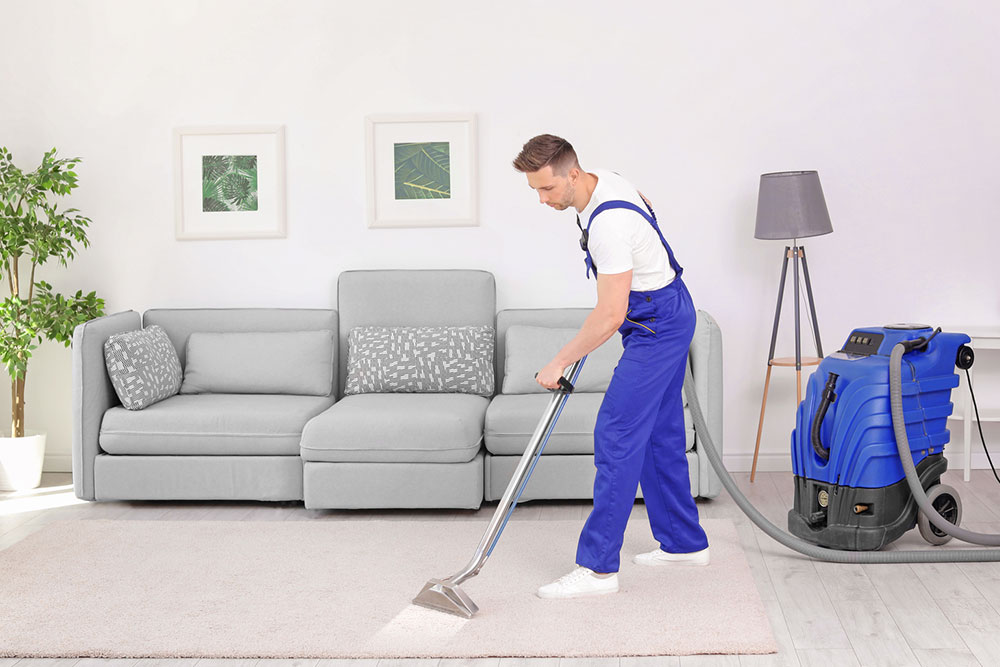10 carpet cleaning mistakes to avoid

Carpets can become breeding grounds for dust particles if not cleaned regularly. And that’s why home cleaning is not complete without cleaning the carpet. Fortunately, carpet cleaning is quite an easy task if one remembers to follow some hacks and strategies and take care of it. What a carpet needs most is gentle handling, mild products, and consistent cleaning. In addition, here are some mistakes one should avoid while cleaning carpets:
Scrubbing the carpet
Most people think of scrubbing as the right solution to removing stains. But when it comes to carpets, scrubbing can actually cause a lot of damage, especially if the scrub has hard bristles. The fibers of a carpet tend to get displaced when it is scrubbed. Also, scrubbing only pushes the dirt further inside the carpet, worsening the situation. A better alternative is to blot stains using a sponge or cloth and consult a professional if the stain still persists.
Not treating stains proactively
If a stain is left unattended for too long on a carpet, it tends to form lumps and settle between the carpet’s fibers. So, it can become even more difficult to be removed after a point. The best way to avoid this situation is to blot stains proactively, not letting them settle or make their way deeper into the fabric. Also, one should check the carpet regularly for any stains that may have gone unnoticed so far.
Using a cleaning product without doing a spot test
There is no fixed formula when it comes to using cleaning products on carpets – different cleaning products may work well for different carpets depending on the carpet’s material, how much dust and dirt has accumulated on it, etc. A carpet can get severely damaged if the wrong solution is used. The most effective strategy to determine what cleaning products are best for a carpet is to do a spot test. One should pour a small quantity of the solution over a selected spot in the carpet. If the solution damages this spot, it shouldn’t be used on the rest of the carpet. A spot test ensures that only a small part of the carpet is ruined, even if the solution being tested isn’t the right one.
Making the carpet too moist
Water is definitely an effective way to clean any surface, including carpets. But with too much water, the carpet’s adhesive may wear out, and mold and mildew may begin to develop eventually. So, one should use water sparingly on carpets while cleaning them.
Forgetting personal protective equipment when using strong products
When strong or abrasive solutions come in contact with the skin, they can cause serious skin infections and other health problems. So, one shouldn’t forget personal protective equipment, including gloves and masks, when using strong products, such as an acidic carpet cleaning solution.
Using carpet deodorizers
Carpet deodorizers may be ostensibly effective solutions for a spick and span carpet, but they can actually cause a lot of damage over time, including even bleaching the carpet. Also, they don’t ensure 100% smell-free carpets. For this reason, it is a better option to use a steamer instead of a carpet deodorizer to remove stains and dust particles settled on it.
Not using the right carpet cleaning tools
Carpets can be cleaned well even without machines, but using the wrong machines and tools can severely damage a carpet. So, if one is not sure whether a certain machine or tool is right for the carpet, it is best to avoid using it or consult a professional about it. In any case, taking a professional’s guidance is a good idea before using carpet cleaning tools and machinery.
Cleaning before dusting or vacuuming the carpet
Usually, when one comes across dust particles or food crumbs on a carpet, one’s instinctive reaction is to grab a damp cloth or sponge and start cleaning. But in the bargain, one may end up pushing the particles further into the fabric. Also, if there are existing stains on the carpet, these particles may integrate with them and become even more difficult to remove. So, the solution here is to dust or vacuum the carpet first, removing all these particles before cleaning it with a carpet cleaning product.
Not being aware of quick carpet cleaning hacks
Those not experienced in carpet cleaning may find the task rather difficult and time-consuming. But the fact is that carpet cleaning is mostly about knowing quick and effective hacks and using them in the right situations. For example, applying shaving cream on a stain and blotting it after around an hour is a trick many professionals use to remove hard stains from carpets. Dishwasher detergents, club soda, and vinegar solutions also work well in removing carpet stains. Such hacks can actually save one a lot of time and effort.
Not consulting a professional when required
Although DIY cleaning solutions are quite effective in carpet cleaning, some things are best handled by experts. Trying endlessly to find solutions independently can only worsen the problem. So, one should not hesitate to consult a professional when needed. Also, even in general, it is best to have a professional examine the carpet to detect any issues that can be easily missed otherwise.







